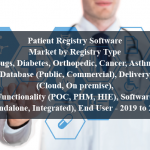OVERVIEW
The global market size of embolic protection devices is expected to reach USD 650 million by 2024, continuing to grow over the forecast period at a CAGR of 7.75%. It is expected that factors such as the increasing incidence of cardiovascular and neurovascular diseases, increasing funding and investment, the launch of technologically advanced embolic protection devices, and rising demand for minimally invasive procedures will drive market growth.









TABLE OF CONTENT
1 Global Embolic Protection Devices Market
1.1 Study Objectives
1.2 Market Definition
1.3 Study Scope
1.3.1 Markets Covered
1.3.2 Geographic Scope
2 RESEARCH METHODOLOGY
2.1 Research Data
2.1.1 Secondary Data
2.1.1.1 Key Data From Secondary Sources
2.1.2 Primary Data
2.1.2.1 Key Data From Primary Sources
2.1.2.2 Key Industry Insights
2.1.2.3 Breakdown of Primaries
2.2 Market Size Estimation
2.2.1 Bottom-Up Approach
2.2.2 Top-Down Approach
2.3 Market Breakdown and Data Triangulation
2.4 Research Assumptions
3 Global Embolic Protection Devices Market – Executive Summary
3.1 Market Revenue, Market Size and Key Trends by Company
3.2 Key Trends by type of Application
3.3 Key Trends segmented by Geography
4 Global Embolic Protection Devices Market – Comparative Analysis
4.1 Product Benchmarking – Top 10 companies
4.2 Top 5 Financials Analysis
4.3 Market Value split by Top 10 companies
4.4 Patent Analysis – Top 10 companies
4.5 Pricing Analysis
5 Global Embolic Protection Devices Market – Industry Market Entry Scenario
5.1 Regulatory Framework Overview
5.2 New Business and Ease of Doing business index
5.3 Case studies of successful ventures
5.4 Customer Analysis – Top 10 companies
6 Global Embolic Protection Devices Market – Market Forces
6.1 Introduction
6.2 Market Dynamics
6.2.1 Drivers
6.2.2 Opportunities
6.2.3 Challenges
6.3 Porters Analysis of Market
6.3.1 Bargaining power of suppliers
6.3.2 Bargaining powers of customers
6.3.3 Threat of new entrants
6.3.4 Rivalry among existing players
6.3.5 Threat of substitutes
7 Global Embolic Protection Devices Market – Strategic Analysis
7.1 Value Chain analysis
7.2 Product Life Cycle
7.3 Supplier and distributor analysis (Market share and product dealing strategies)
8 Global Embolic Protection Devices Market – By Type (Market Size – & million/billion)
8.1 Distal Filter Devices
8.2 Distal Occlusion Devices
8.3 Proximal Occlusion Devices
9 Global Embolic Protection Devices Market – By Material
9.1 Nitinol
9.2 Polyurethane
10 Global Embolic Protection Devices Market – By Aplication
10.1 Cardiovascular Diseases
10.2 Neurovascular Diseases
10.3 Peripheral Diseases
11 Global Embolic Protection Devices Market – By End-User
11.1 Hospitals
11.2 Ambulatory Care Centers
12 Global Embolic Protection Devices Market – By Geography (Market Size – &
million/billion)
12.1 Introduction
12.2 North America
12.2.1 US
12.2.2 Canada
12.2.3 Mexico
12.3 Europe
12.3.1 U.K
12.3.2 Germany
12.3.3 Italy
12.3.4 France
12.3.5 Spain
12.3.6 Rest of Europe
12.4 Asia-Pacific
12.4.1 China
12.4.2 Japan
12.4.3 India
12.4.4 South Korea
12.4.5 Rest of APAC
12.5 Rest of the World
12.5.1 South America
12.5.2 Middle East
12.5.3 Africa
13 Global Embolic Protection Devices Market – Entropy
13.1 New product launches
13.2 M&A’s, collaborations, JVs and partnerships
14 Global Embolic Protection Devices Market Company Profile (Key Players)
14.1 Market Share, Company Revenue, Products, M&A, Developments
14.2 Medtronic
14.3 Abbott Laboratories
14.4 W. L. Gore & Associates
14.5 Cordis (A Cardinal Health Company)
14.6 Allium Medical Solutions
14.7 Angioslide
14.8 Contego Medical
14.9 Boston Scientific
14.10 Silk Road Medical
14.11 Claret Medical
14.12 Company 11 & more
15 Global Embolic Protection Devices Market – Appendix
15.1 Sources
15.2 Abbreviations













